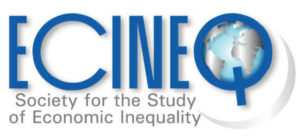The impact of top incomes biases on the measurement of inequality in the United States
Working Paper 2017-452
Abstract
The paper re-estimates the Gini inequality index for the United States using the Current Population Survey between 1979 and 2014 and two alternative correction methods for top income biases. Top incomes in household surveys are affected by a variety of biases related to survey design, income measurement and post-survey data adjustments. The paper corrects for selected biases using a stochastic approach based on reweighting and a semi-parametric approach based on replacing observations. Both methodologies show that income inequality in the United States has been consistently underestimated during the period considered. The level of underestimation is up to 6.83 percentage points depending on the year considered, choice of correction method and choice of modalities within methods. The degree of underestimation is positively and significantly associated with mean income, non-response rates, the initial level of inequality and the degree of departure of the top incomes distribution from a Pareto distribution.
Authors: Vladimir Hlasny, Paolo Verme.
